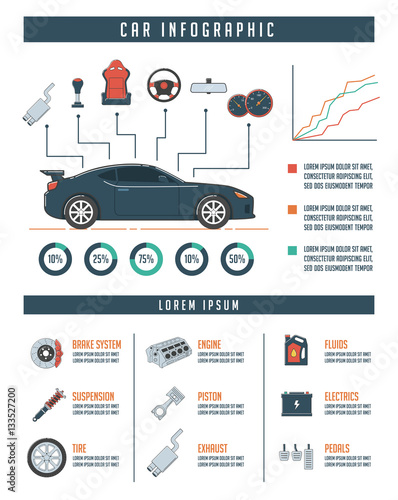Interpreting Your Vehicle'S Alert Lighting: Their True Implications
Interpreting Your Vehicle'S Alert Lighting: Their True Implications
Blog Article
Material Composed By-Samuelsen Torres
When you lag the wheel, those glowing caution lights on your control panel can be a bit puzzling. Do you understand what they're attempting to inform you about your auto's health? Understanding the value of these lights is vital for your safety and security and the longevity of your vehicle. So, the next time one of those lights turns up, would not you wish to decode its message accurately and take the needed actions to address it?
Common Caution Lighting and Interpretations
Determine usual warning lights in your car and comprehend their definitions to guarantee secure driving.
The most typical warning lights include the check engine light, which indicates concerns with the engine or exhausts system. If this light comes on, it's essential to have your automobile checked quickly.
The oil pressure alerting light shows low oil pressure, requiring immediate attention to stop engine damage.
A flashing battery light could suggest a damaged billing system, possibly leaving you stranded if not addressed.
The tire pressure tracking system (TPMS) light alerts you to low tire pressure, influencing lorry security and gas efficiency. Disregarding this can lead to hazardous driving problems.
The abdominal light suggests a trouble with the anti-lock braking system, compromising your capacity to stop rapidly in emergency situations.
Last but not least, the coolant temperature warning light warns of engine overheating, which can cause serious damages otherwise dealt with quickly.
Recognizing these usual caution lights will aid you deal with concerns quickly and maintain secure driving conditions.
Value of Prompt Attention
Comprehending the typical warning lights in your cars and truck is only the first step; the value of promptly resolving these cautions can't be emphasized sufficient to ensure your safety on the road.
When a warning light illuminates on your control panel, it's your car's means of interacting a potential issue that needs attention. Overlooking https://www.fool.com/investing/2022/03/04/how-carpartscom-could-disrupt-auto-parts-industry/ can lead to a lot more serious problems down the road, jeopardizing your security and potentially costing you more out of commission.
Motivate focus to alerting lights can stop malfunctions and mishaps. For instance, a flashing check engine light can show a misfire that, if left unattended, can trigger damage to the catalytic converter. Addressing this immediately can conserve you from a pricey repair.
Likewise, a brake system advising light may signify reduced brake liquid or worn brake pads, important parts for your security when driving.
Do It Yourself Troubleshooting Tips
If you notice a caution light on your dashboard, there are a few DIY fixing suggestions you can attempt before looking for specialist help.
Highly recommended Web-site is to consult your vehicle's manual to understand what the specific warning light indicates. Sometimes the problem can be as simple as a loosened gas cap setting off the check engine light. Tightening up https://brake-shops84951.bloginder.com/30565892/interested-regarding-automobile-detailing-materials-discover-the-essential-tools-and-professional-suggestions-that-will-boost-your-outlining-abilities-as-a-beginner might deal with the problem.
An additional usual problem is a reduced battery, which can cause various advising lights. Inspecting the battery links for deterioration and guaranteeing they're safe might take care of the trouble.
If a warning light persists, you can try resetting it by separating the vehicle's battery for a few minutes and after that reconnecting it. Additionally, checking your vehicle's liquid levels, such as oil, coolant, and brake fluid, can assist troubleshoot warning lights connected to these systems.
Verdict
To conclude, understanding your cars and truck's warning lights is necessary for maintaining your car running smoothly and securely. By promptly resolving these notifies and understanding what they indicate, you can stay clear of expensive repairs and potential malfunctions.
Bear in mind to consult your cars and truck's guidebook for particular information on each cautioning light and act appropriately to ensure a trouble-free driving experience.
Keep notified, remain risk-free when driving!
